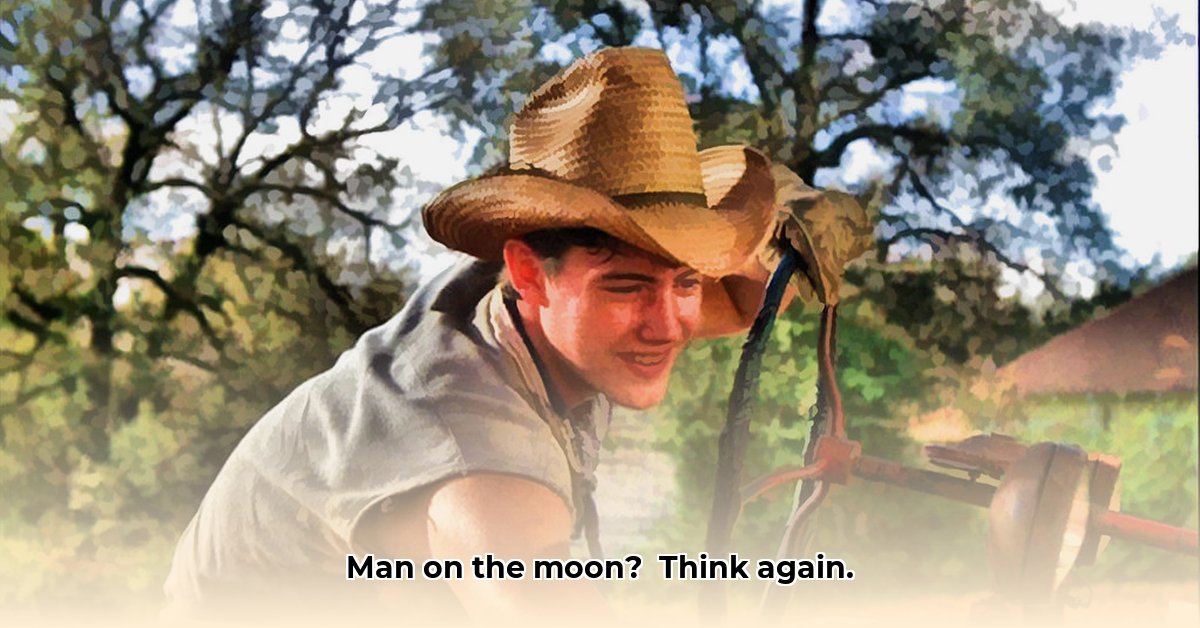
A Pivotal Moment in the Narrative
The tractor scene in Robert Mulligan's The Man in the Moon isn't merely a transitional moment; it's a pivotal scene that subtly yet powerfully foreshadows the film's emotional core. This seemingly simple image of a tractor traversing a Louisiana field acts as a potent symbol, marking a shift from the carefree innocence of childhood to the more melancholic realities of adolescence and loss. The scene seamlessly blends stunning visuals, evocative sound design, and powerful performances to create an unforgettable cinematic experience. For more on tractors in film, check out this interesting resource.
Visual Storytelling: Light and Shadow
Mulligan's masterful use of cinematography is striking. The vibrant, sun-drenched landscapes of the film's earlier moments give way to a muted palette. The golden light of day is softened, casting long shadows that mirror the growing anxieties within the heart of young Dani Trant (Reese Witherspoon). The tractor itself, usually a symbol of steady, dependable work, now appears heavy, almost mournful – a visual metaphor for the weight of Dani's burgeoning awareness of loss. This subtle shift in lighting and composition profoundly alters the scene's mood, shifting from carefree joy to a palpable sense of apprehension.
Sound Design: The Power of Silence
The audio landscape further enhances the scene's poignancy. The usual sounds of rural life—birdsong, buzzing insects—are conspicuously absent. The near-silence is punctuated only by the rhythmic chugging of the tractor engine, creating a palpable tension. This calculated absence of sound amplifies the emotional weight, allowing the unspoken anxieties and fears to resonate with far greater intensity. It's a masterclass in cinematic sound, creating an atmosphere of quiet contemplation and foreshadowing.
Acting: Subtlety and Emotional Depth
Reese Witherspoon delivers a breathtaking performance. Her facial expressions are subtle yet powerful, communicating a complex blend of loss, uncertainty, and fragile hope. The silent dialogue in her eyes conveys a heartbreaking struggle between clinging to childhood and accepting the painful realities of adulthood. Her restrained performance allows the audience to fully inhabit Dani's emotional world, making the scene both profoundly moving and deeply relatable.
Narrative Function: A Turning Point
The tractor scene serves as a critical narrative turning point. It marks the transition from the idyllic innocence of early adolescence to the more complex and challenging realities of grief and growing up. The slow, deliberate movement of the tractor across the vast field mirrors the gradual, painful process of accepting loss and moving forward. It's a potent visual metaphor for the passage of time and the enduring power of memory.
Connecting to Broader Themes: Loss and Acceptance
The scene powerfully embodies the film's overarching themes of loss and acceptance. The quiet, contemplative mood reflects the film's overall tone – a bittersweet acknowledgment of life's inevitable sorrows. The scene strikes a deep chord because its emotional resonance transcends the specific narrative, tapping into the universal human experiences of grief, change, and the bittersweet nature of growing up. The emotional weight carried in these deceptively simple visuals resonates deeply with the audience long after the film has ended.
Did you find this scene as impactful as other key moments in the film? It’s a testament to Mulligan’s directorial skill that such a seemingly straightforward scene can evoke such a powerful response.
Conclusion: An Enduring Legacy
The tractor scene in The Man in the Moon is more than just a visually striking moment; it's a microcosm of the film's emotional depth, a testament to the power of subtle filmmaking. Through its masterful use of visuals, sound, and performance, the scene leaves an indelible mark on the viewer, underscoring the enduring power of cinematic storytelling to explore universal themes of loss, acceptance, and the often-painful, yet essential, process of growing up. It remains a powerful example of how a seemingly simple scene can carry profound emotional weight.